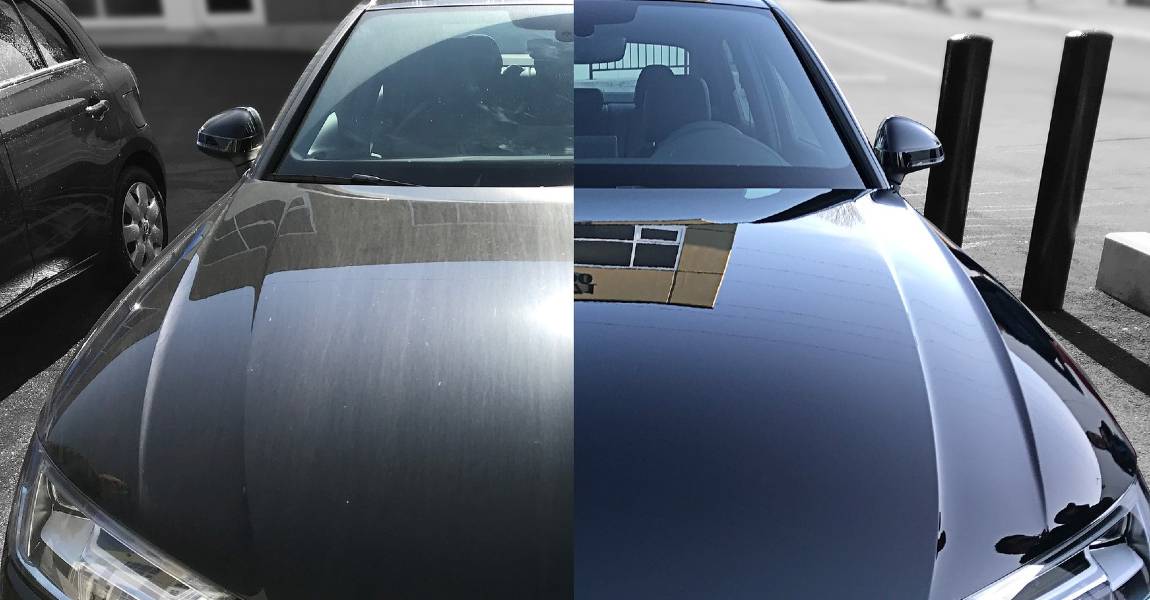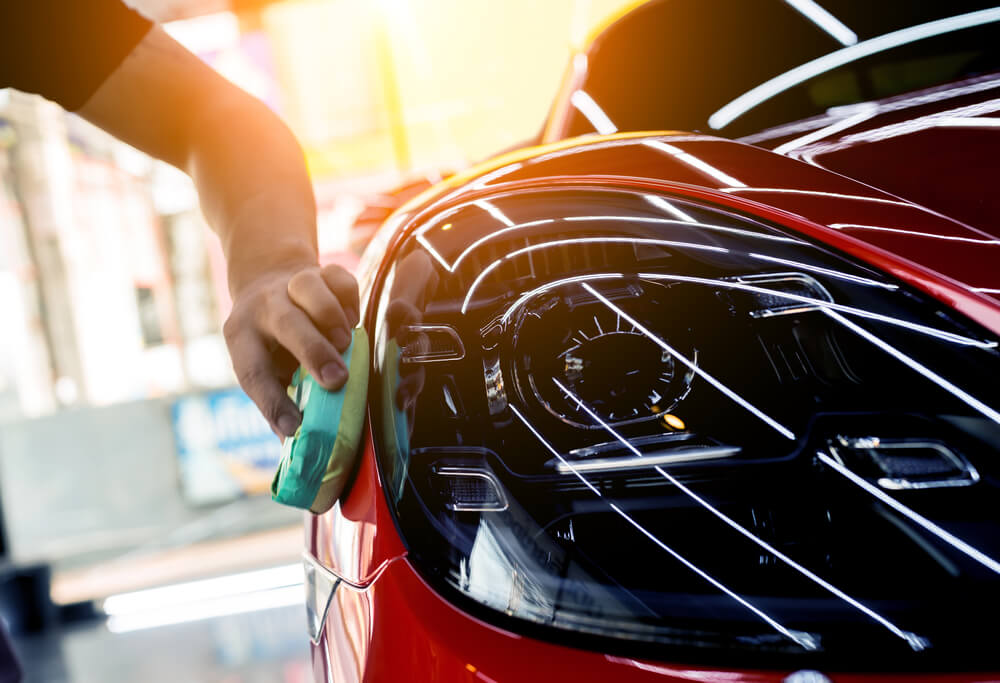The Function of Ceramic Coating in Enhancing Your Automobile's Resale Worth
The Function of Ceramic Coating in Enhancing Your Automobile's Resale Worth
Blog Article
The Importance of Ceramic Coating: Protecting Your Cars and truck's Outside With Precision
In an era where preserving the visual and useful stability of your lorry is critical, ceramic finishing emerges as an essential solution. With its special bonding residential properties, ceramic finishing provides a degree of security that far goes beyond traditional waxing methods.
Benefits of Ceramic Coating
When it comes to maintaining a vehicle's aesthetic charm, ceramic coating provides considerable advantages. By developing a semi-permanent bond with the car's paint, ceramic coatings properly stop oxidation and fading, making certain that the auto maintains a glossy, showroom-like finish for a prolonged period.
Along with its protective top qualities, ceramic coating offers amazing hydrophobic properties, causing water and various other fluids to bead off easily. This function streamlines the cleansing process, as dust and particles are much less most likely to follow the surface, minimizing the frequency and effort required for upkeep. The covering's resistance to chemical spots from acidic contaminants like bird droppings and tree sap is another notable benefit, decreasing prospective paint damages.
Ceramic finishes also enhance scrape resistance, giving a layer that can absorb minor abrasions and swirl marks. This quality is especially beneficial in keeping an excellent surface area, reducing the chance of noticeable flaws and protecting the honesty of the cars and truck's paintwork in time.

Just How Ceramic Finishing Functions
Understanding the auto mechanics behind ceramic covering exposes its efficacy as a protective service for automobiles. Ceramic layers are basically fluid polymer applications that chemically bond with a vehicle's manufacturing facility paint, developing a protective layer. This layer works as a barrier against ecological impurities such as ultraviolet, dirt, and crud rays, which can weaken a car's outside gradually. The essential component in ceramic covering is silicon dioxide (SiO2), which stems from quartz crystals and is understood for its exceptional solidity and durability.
Application of ceramic layer includes a precise process. This guard improves the automobile's gloss and hydrophobic properties, facilitating less complicated cleaning by causing water and pollutants to bead and slide off effortlessly.
Furthermore, the finishing's molecular framework provides resistance to small scrapes and chemical discolorations. Unlike waxes or sealants that rest on top of the paint, ceramic finishings integrate with the surface, using durable defense. This combination is essential to its performance, making certain the vehicle's finish remains beautiful for many years.
Contrasting Ceramic Coating to Alternatives
In the world of automobile protection, ceramic coating stands as a formidable option when compared to typical choices such as waxes and sealers. While waxes offer a short-term shiny finish, usually lasting just a few weeks to months, ceramic finishes give a longer-lasting option, typically withstanding for several years. This sturdiness is credited to the chemical bonding that happens when ceramic finishes are applied, forming a solid layer that is immune to environmental hazards.
Contrastingly, sealers, although more resilient than waxes, still disappoint the robust protection provided by ceramic finishes. Sealants can generally last for as much as a year, supplying an artificial guard against specific aspects. They lack the premium hydrophobic properties and UV protection that ceramic finishings deliver.
Furthermore, ceramic finishings offer enhanced scrape resistance, which neither waxes neither sealants can effectively match (ceramic coating). This is especially useful in preserving a cars and truck's immaculate look. Additionally, ceramic layers simplify maintenance efforts by decreasing the adherence of dust and grime, thereby helping with less complicated cleaning. In recap, while conventional waxes and sealants offer standard defense, ceramic layers present a detailed, lasting solution that considerably enhances and preserves the automobile's exterior coating.
Application Refine Discussed
Applying ceramic covering to a car needs a precise procedure to guarantee optimal results and durability. When cleaned up, the car is dried out and brightened to get rid of any type of flaws, as any existing swirls or scratches can come to be much more pronounced after the finish is applied.
Adhering to surface preparation, the application of the ceramic finish starts. The coating is typically used in a climate-controlled setting to avoid dust particles from picking the fresh cleaned surface. Using an applicator pad, the ceramic finish is used in tiny areas to guarantee even coverage. It is necessary to comply with the supplier's standards concerning the ideal healing time and application thickness.
After application, the layer needs a certain healing period, useful reference during which the car should be secured from water and contaminants. This healing process can vary depending on the item but normally ranges from 24 to her explanation two days. Inevitably, this detailed process is crucial in achieving a shiny and resilient finish.
Upkeep Tips for Long Life
To keep the long life of a ceramic coating, adherence to a regimented upkeep regimen is vital. Routine cleaning is vital; utilize a pH-neutral cars and truck shampoo and soft microfiber gloves to prevent abrasions. Stay clear of automatic auto washes, as their severe brushes can endanger the coating's integrity. Instead, go with a hand laundry to ensure thorough yet gentle cleaning.
Post-wash, drying out the car with a tidy microfiber towel prevents water spots that may break down the layer in time. Additionally, apply a ceramic coating booster every few months. These boosters strengthen the hydrophobic residential or commercial properties and improve the finishing's protective abilities, guaranteeing it stays reliable versus impurities.
Remember that parking locations play a crucial duty in upkeep. ceramic coating. Whenever possible, park in shaded locations to reduce UV direct exposure, which can gradually weaken the layer. For long-lasting storage, take into consideration making use of an auto cover for included protection versus environmental aspects
Verdict
In final thought, ceramic layer acts as an essential protective layer for automobile exteriors, offering long-lasting protection against ecological aspects such as uv, dirt, and grime rays. YOURURL.com By creating a semi-permanent bond with the paint, it enhances aesthetic charm while preserving the vehicle's value. Its hydrophobic residential or commercial properties facilitate less complicated upkeep, distinguishing it from alternate protective methods. Understanding the application process and sticking to maintenance suggestions are necessary for optimizing the durability and efficiency of ceramic coating.
When it comes to preserving a car's visual appeal, ceramic coating supplies considerable benefits. By developing a semi-permanent bond with the lorry's paint, ceramic coverings successfully protect against oxidation and fading, making sure that the automobile keeps a glossy, showroom-like finish for an extended period. Ceramic finishes are basically liquid polymer applications that chemically bond with an automobile's factory paint, developing a protective layer. In summary, while standard waxes and sealants provide standard security, ceramic finishes provide an extensive, lasting option that dramatically improves and protects the vehicle's outside coating.

Report this page